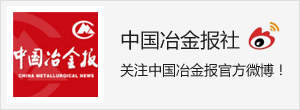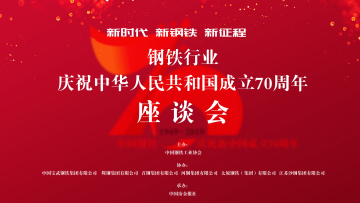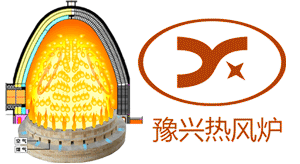By Junguo Guo、Ying Zhang(CMN)
Global overcapacity, difficulties in the process of structural adjustment, difficulties of production and operation...... At present, in a tough market environment, Chinese steel industry, as well as the global steel industry, are facing many challenges. How to solve global iron and steel overcapacity problem? What is the best way for iron and steel enterprises to go global? Will the wave of global mergers and acquisitions reproduced? How to improve the competitiveness of iron and steel industry and enterprises? With these confusions, lately, journalists from China Metallurgical news had an exclusive interview with the world Steel Association Director General Dr Edwin Basson.
1. Chinese steel producers are going global and are making a significant impact in global markets. Do you have any suggestions as to what they should focus on as this process accelerates?
At the moment, two thirds of steel produced worldwide is consumed in steel-producing countries, with the remaining third exported to countries that don’t produce any steel. The latter countries are very diverse and are at different levels of development meaning that if a steel company wishes to go global it must first understand the market that it wishes to enter, taking into account local production standards and regulations, and local customer behaviour. This last point is particularly important; the better you understand your customers’ needs, the better your company will perform.
There are three ways of going global:
· First, sell finished steel products into the international markets. In the current climate in which the steel industry is faced with overcapacity problems this is probably not the wisest course of action.
· Second, sell finished steel products to local downstream industries, the construction or automotive industries for example. In addition to selling their railway tracks or cars in their local markets, these industries may well sell globally and your company will look set to gain an international reputation among the primary steel-consuming industries. This is a more difficult and time-consuming business strategy, but one that has much better long-term benefits compared to the first way.
· The third way of going global is to develop new steel markets by cooperating with steel producers overseas.
Chinese steel companies have tended to go global in the first way, which unfortunately can exacerbate the overcapacity problem and lead to trade disputes. However, the second approach is not unknown in China, and the Chinese government has implemented a number of helpful strategies to facilitate the sale of finished steel products in global markets. The ‘One Belt, One Road’ and ‘Made in China 2025’ strategies are good examples.
2. You mentioned that excess capacity is a big global issue now. Are there any lessons China can learn by looking at how The United States, Japan, and Europe dealt with such problems in the past?
I should first of all make clear that the restructuring of the steel industry is a complex and potentially painful process. If market conditions compel steel companies to shut down part of their operations then these companies should strive to minimise any disruption to their customers, to say nothing of the efforts they should make to cushion the blow to employees who lose their jobs. China will not be able to escape the painful requirements of restructuring that global markets will force on it, just as the United States, Japan, and Europe, were not able to escape in the recent past. Their experiences, especially those between 1970–1990, can indeed provide China with some guidance:
Firstly, governments should implement policies that ensure market forces play a decisive role in determining the future of the industry. Past restructuring was only successful when government support and other barriers to orderly market transformation were removed. Industrial competitiveness was maintained and in most cases improved as a result of restructuring.
Secondly, market-orientated approaches should ensure the survival of the fittest. Inefficient producers should not be subsidised to remain in operation. However, given the importance of steel producers to local communities and regional governments, this if often easier said than done.
Thirdly, barriers to exit that delay restructuring should be removed in an orderly and timely way. In some countries, there are strong barriers to exit that delay the closure of inefficient steelworks. The main reasons are often the difficulties involved in retraining steel workers, environmental issues, and pressure from M&As.
Fourthly, safety nets with government support that mitigate the consequences of restructuring, such as providing retraining opportunities for steel workers, should be put in place.
Finally, commitments to restructuring should not be taken at face value; they should be monitored to ensure that restructuring is being carried out as planned.
China is currently in a process of intensive restructuring, a process that will take many years and which is never really complete due to the nature of market forces. However, these competitive forces will ultimately help the Chinese steel industry to restructure in the most efficient way.
3. The global industry is today facing its worst downturn in living memory. Do you foresee a wave of global M&As? Again, are there any lessons that China should learn from the United States, Japan, and Europe in this regard?
ArcelorMittal, NSSMC, and – a Chinese example - Hesteel are successful examples of large scale M&As. Conversely, there are some M&A cases that in fact scale down the size of operations, focusing on the field they are most efficient in. voestalpine is one such example; they are now more focused on two to three areas in which they excel rather than focusing on a wider range of areas in which they are less competitive. Merging with downstream companies, such as automotive or machinery producers, is another option. For example, thyssenkrupp merged its lift and high-rise building construction companies and was able to be more profitable in both areas.
In short, there are no hard and fast rules when it comes to M&As; bigger is not necessarily better. Restructuring should take the form of whatever fits best with a steel company’s development strategy.
4. The current situation provides a lot of opportunities for enhancing competitiveness, such as diversifying development, widening the product mix, improving quality, suiting customer’s need better etc. Which of these do you think is the most important and which do you think the Chinese steel industry will find the most difficult to implement?
You are right to point out that there are numerous approaches when it comes to enhancing the competitiveness of the steel industry. However, more important than any of the ones mentioned is improving a steel company’s operational efficiency. In this respect, there are a number of things that can be done: closing out-dated facilities, providing development opportunities for employees to enhance productivity, improving the quality of the steel products through automatic and intelligent inspection systems, to name a few.
The best way for the Chinese steel industry to improve its operational efficiency is to reduce excess capacity. The production of steel in countries that are net steel importers is likely to increase in the coming years, meaning that China is likely to see a decrease in its overseas market share. Large scale exportation of the steel that is not consumed domestically is therefore not a sensible long term solution for China. Steel producers with large capacity should focus on local markets and better serve them. Cooperation with downstream markets should also be a priority.
Steel is the ‘rice of industries’ and restructuring in the sector is not new; it is an ongoing process as old as the industry itself and it requires appropriate industrial policy developed by governments in cooperation with industry.
More news, please click on http://www.csteelnews.com/csteelnews/ztbd/cmn/




































